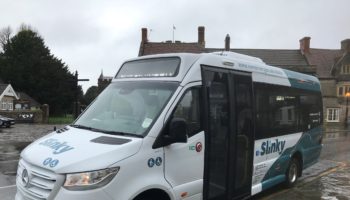Mobility in rural areas is a major issue. Transport provision for rural areas in the UK has shrunk over the past half century. From the Beeching cuts to the decline in bus services over more recent history – which is particularly acute in rural areas – there is now a crisis in provision for rural communities.
The challenges of rural mobility are those of smaller populations, distributed unevenly over greater areas (along with jobs and services) and generally connected by lower capacity and less reliable networks. According to the Countryside Climate Network, 2020:
- 43% of people living in rural England live more than 1hour away from a hospital by public transport, compared to just 7% of people in urban areas
- 47% of people living in rural England live more than 30 minutes away from a town centre by public transport, compared to just 5% of people in urban areas
- People in rural areas travel more kilometres per year than people living in urban areas
Since its creation, Padam Mobility aims to make smart mobility more efficient, and therefore more accessible, to sparsely populated areas. Taking care of the mobility of the inhabitants of peri-urban and rural areas by offering sustainable shared mobility solutions is a mission to which the company responds on a daily basis by implementing on-demand transport services (DRT and Paratransit). To improve travel for all and facilitate access to services and jobs.
Our solutions have proved their worth in rural areas because they are easily adaptable to local issues and provide relevant answers to the problems encountered by mobility stakeholders in this scale of territory. Because they make it possible to reduce the cost per trip, by increasing the attractiveness of services and therefore ridership, while at the same time reducing operating costs by minimising empty rides as much as possible. Also because they can be adapted and integrated into a mobility offer by focusing on the most difficult part: providing a comprehensive service to users who are furthest away from the main routes. They particularly respond to the challenges of:
Relevance of the mobility offer
- Consideration of local constraints and adapting to the different use cases
- Complementarity with the conventional public transport offer
Quality of service
- Lower operating costs and significant improvement in the performance of DRT and Paratransit services
- Simplification of the tasks of the call centres: faster booking and processing, automatic ride dispatch
User experience and digital transition
- Reduction of booking times
- User empowerment through the introduction of new booking channels (website and mobile app)
- Improved passenger experience: real-time, multi-dates or recurring bookings, reminder notifications, ergonomic interfaces, etc.
Accessibility and sustainability
- Reduction of the carbon footprint and fine particles thanks to itinerary optimisation and ride pooling
- Adaptation to all types of vehicle fleets
- Pooling of DRT and Paratransit services for a universal and 100% accessible offer
In Châlons-en-Champagne, Saint-Omer, in the Brittany or Pays de la Loire region in France, in the federal state of Rhineland-Palatinate, in Germany, Padam Mobility DRT and Paratransit solutions have been able to adapt to the local constraints and challenges of both the territories and their inhabitants in order to improve the mobility of rural populations, reduce their dependency on private cars and increase their autonomy in their travels.
In these territories, transport operators and public authorities have jointly decided to encourage a smart and flexible alternative mobility, based for the most part on innovative management platforms. Thanks to on-demand transport services (DRT and Paratransit), new ways of managing and guaranteeing access to a more inclusive and sustainable mobility have been put in place. These means allow a gradual transition towards carbon-free travels, reduce the impact of private cars and improve access to employment and service areas.
The implementation of dynamic DRT and Paratransit smart solutions guarantees operators and local authorities immediate benefits:
- Increased ridership and lower operating costs per trip thanks to a better user experience and the introduction of new booking channels that address wider user groups (young people, seniors, commuters, occasional users). As an example, DRT services triple their ridership on average once equipped with Padam Mobility technology.
- Optimisation of resources by grouping services on a single platform to maximise service use. These platforms can also be adapted to any type of vehicle and user group while ensuring optimal allocation of resources and optimised service management.
The potential and new use cases that these on-demand transport services make it possible to apprehend open up new perspectives:
Rethinking the mobility offer as a whole
- While regular public transport is viable with a minimum of demand density, smart DRT and Paratansit services can be set up to connect to regular public transport networks, thereby increasing ridership rather than competing with them.
- In the light of the development of Mobility as a Service solutions (MaaS), DRT and Paratransit represent one of the rural mobility options that help to improve the overall coverage of a territory and seamless travels.
Adapting quickly and at no extra cost to the new use cases that have emerged as a result of the health crisis.
- The dynamic DRT and Paratransit services make it possible to set up smart health transport services in rural areas dedicated to the most vulnerable to serve health care or vaccination centres, to relieve congestion or to supplement regular lines in compliance with health measures.
- At a time when the health crisis is highlighting all the limits of living in an urban environment, the inhabitants of metropolises are migrating to rural areas where the living environment is more pleasant. These newcomers, who very often do not have a car (or even a driving licence), bring with them new expectations and requirements in terms of access to a reactive mobility that adapts to their lifestyles.
Find out more about Padam Mobility
This article might interest you: How Padam Mobility is revolutionising the way people move in all territories







